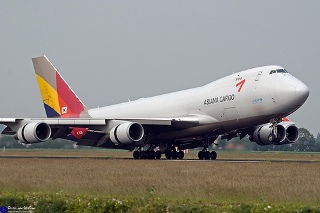 Global airfreight markets posted strong growth in July compared to the same month last year and to June this year, indicating the impact on the industry of the economic recovery in some major regions, particularly in Asia-Pacific, according to data from industry research providers.
Global airfreight markets posted strong growth in July compared to the same month last year and to June this year, indicating the impact on the industry of the economic recovery in some major regions, particularly in Asia-Pacific, according to data from industry research providers.
Air cargo volume rose 5.8 percent in freight tonne kilometers in July year-over-year, said the International Air Transport Association (IATA). It is also an acceleration over June this year when cargo demand grew at just 2.4 percent.
“The strong growth mirrors positive developments in some key regional economies,” IATA said. “After a slowdown at the start of the year, global business confidence and trade are showing signs of improvement again, especially in Asia-Pacific.”
Global air cargo volumes have now surpassed their previous July peak in 2010, and look set to continue to increase. European airfreight, however, grew just 1.8 percent. This reflects the effects of the Russia-Ukraine crisis, which is adding to economic weakness in the Eurozone.
“Overall, July saw growth accelerate. That’s good news and it reflects the continued strengthening of business confidence at a global level,” said Tony Tyler, IATA’s director general and CEO.
But he noted that the air cargo industry is moving at two speeds with a sharp divide in regional performance. European carriers reported anemic growth of just 1.8 percent while all other regions reported solid gains of 5 percent or more on the previous year.
“In particular, the 7.1 percent growth reported by airlines in Asia-Pacific is encouraging as it demonstrates a recovery in trade and a positive response to China’s economic stimulus measures,” he added.
Asia-Pacific airlines showed their strongest rise in air cargo volumes in July since the start of 2013, as major economies in the region such as China, Japan, and South Korea are expanding again after a slowdown at the start of the year.
World in midst of overdue recovery
Similarly, traffic figures for July from the Association of Asia Pacific Airlines (AAPA) showed continued growth in airfreight demand for the region’s carriers, which saw volumes carried accelerate with a 6.4 percent increase compared to the same month last year.
The regional airlines’ good showing was supported by encouraging growth in demand for exports from major regional manufacturing hubs.
During the first seven months of this year, Asia-Pacific carriers saw international airfreight demand grow by 4.9 percent year-over-year, “marking a long overdue recovery in trade volumes after several years of weak global demand,” said Andrew Herdman, AAPA director general.
But he cautioned that despite the sustained upward trend in cargo demand reflecting continued growth in emerging markets and a relatively stable global economic outlook, Asia-Pacific airlines are still facing “very challenging business conditions.”
The tough operating environment has made revenue growth lackluster and profitability elusive for many of the region’s carriers, he said. “The general outlook for Asian airlines remains positive, but right now, I would say restoring margins is the key focus of management attention across the industry.”
Impressive revenue growth
WorldACD, meanwhile, recorded air cargo volume in July expanding by 6 percent compared to the year-ago period, while revenue growth made an impressive year-over-year hike of almost 9 percent for the period despite what it described as a “harsh business environment.”
This was accompanied by a yield improvement of 2.9 percent, with the yield remaining unusually stable for the third month in a row.
Of the total volume growth in July, two-thirds came from the Asia-Pacific area, once again the engine for growth, said WorldACD.
The markets between Asia-Pacific and North America showed a 25 percent revenue growth (both directions together), while Europe’s outbound business remained below the worldwide average. In inbound traffic, the three largest markets continued to do better than the three smaller markets of Africa, Latin America, and the Middle East & South Asia.
Photo: Pieter v Marion




